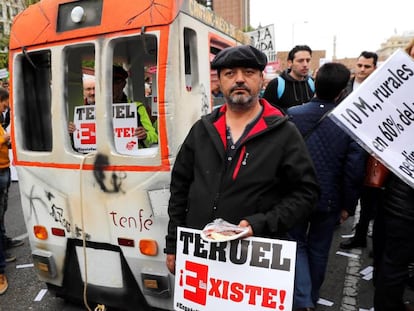Spain’s dying railroad towns: Trying to catch a new train to prosperity
These once-bustling centers of activity were largely abandoned when other forms of transportation took over. But the few remaining residents are fighting to preserve their legacy, and to find a new purpose for their crumbling infrastructure
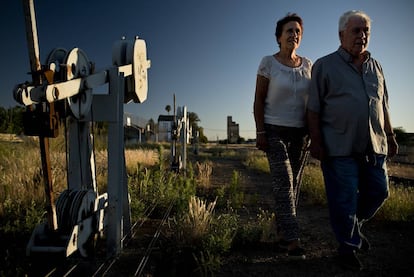
A setting sun casts oblique rays over the hamlet of Algodor. In this spur of Madrid territory that bites into Toledo province, a solitary building made in the neo-Mudejar style rises over the reddish-greenish plain. The old train station with its arched windows was erected in 1929 to replace an older, more humble building.
The pillars still show the acronym MZA, for the railway company that built it. The railroad tracks, rusty and overrun with weeds, are lined with two rows of low houses, around 60 in total. An old engine sits sleepily on a siding, still coupled to two dozen freight cars. The deep calm of this place is almost unsettling.
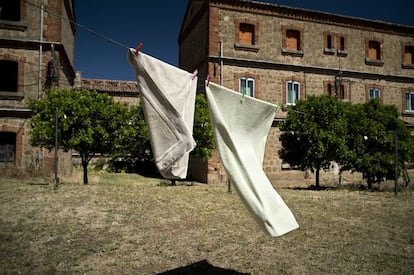
In was in 2005 that silence descended on Algodor. That’s the year that trains stopped passing through on their way to Madrid, after having done so for nearly a century and a half. In 2005, a new high-speed AVE link between Madrid and Toledo was inaugurated, making Algodor station, and the town that grew around it, obsolete.
“It was a small place but very lively. Algodor represents the happiness of my childhood years,” recalls Pepe Rodríguez, the son of a railway worker who moved here with his family from Toledo in 1946, when he was two years old. “We’ve spent more than 15 years fighting with authorities in Aranjuez [which Algodor is administratively a part of] and with Adif [the national railway infrastructure administrator]: we don’t have drinking water, there’s no telephone line... we’ve been left to our own devices.”
But the decadence really began in the 1950s, when economic development brought new technologies. In the 1970s steam-powered engines disappeared, leaving a lot of workers out of a job. High-speed rail and an improved road network did the rest.
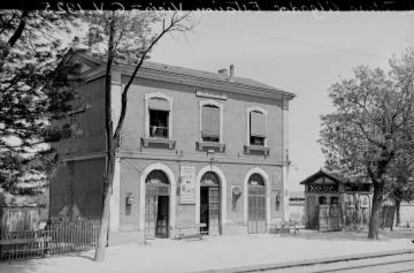
Just like the 50 or so other railroad towns that exist in Spain, Algodor was not built over a previous settlement but rather founded from nothing, to cover the needs created by a mode of transportation that embodied the industrial revolution of the 1800s. Beginning in 1860, workers from all parts of Spain began moving into these new towns, where their children were born. Railway workers were nomads, and the trade was often handed down from one generation to the next.
“Those early settlers were like Martians, or parachutists landing in a territory that had nothing to do with them,” explains Miguel Jiménez, who is in charge of historical heritage and railway tourism at the Spanish railway foundation Fundación de los Ferrocarriles Españoles. Jiménez, who is also the co-author of a definitive book on the subject – Historia de los poblados ferroviarios en España, or History of railroad towns in Spain – says that what was once barren land transformed into miniature cities with schools, a general store, a doctor, a church, a tavern, bars and even cinemas.
But this way of life began dying a slow death as Spain underwent a quick social transformation in the 20th century. Just like Algodor, most of the country’s railroad towns are on the decline, and its remaining residents face an uncertain future.
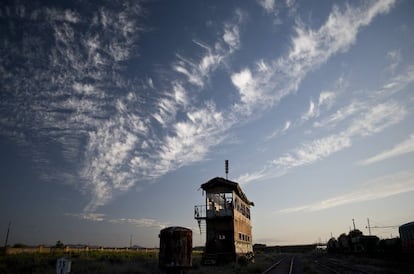
Maribel Uría, 56, was born in Algodor, and she is the only remaining native resident of the town. She, like everyone else around here, rents her home from Adif, the owner of the housing. Some of her neighbors are descendants of the original workers, and they get preferential access to the low-rent homes. Others are outsiders who came attracted by the good prices. “We were used to the noise and it didn’t bother us,” recalls Uría about the long-gone days when trains came and went around the clock. “Now I’ve grown used to the silence.”
Before the creation of the state-owned national railway company Renfe in 1941, there were several private groups operating across the Spanish territory: MZA, Oeste, Norte, Ferrocarriles Andaluces and more. They were the ones who created these railroad towns, with the same protective zeal of a father taking care of his children – protective but authoritarian at the same time. The company thought of everything. The early, precarious housing arrangements (the first arrivals lived in shanty homes or inside train cars) made way for proper homes. The company also paid for the general store and medical services, even though there was still room for a few private business initiatives.
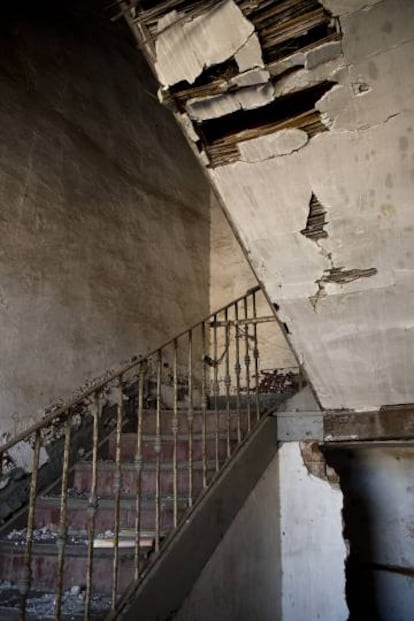
In Almorchón, a railroad town in the western province of Badajoz, Mari Loli Sánchez still lives in the same house where her father and grandfather once worked as butchers. On this same street, there used to be a couple of inns and sidewalk tables where the locals would meet for a drink in the evening. That was in the 1960s, when the population of Almorchón was over 1,200. These days it is 45. “This was a connecting point for trains going to Córdoba, Madrid and Badajoz; it was a beehive of activity,” recalls Clemencia Muñoz Seco, another local resident, who has helped create the neighborhood association Vecinos de Almorchón to preserve the village legacy. “It’s not about obsessing about what used to be, but about thinking of what could be,” says Mari Loli.
One of Adif’s tasks is to manage the assets that Renfe inherited from the private railroad companies. These assets include residential properties, pavilions, train stations, and buildings that once housed schools and medical practices. Many of them are on the verge of collapse. In the big cities, such as Madrid’s neighborhood of Vicálvaro, most of the property was sold off years ago. “They are old buildings, where we did all the maintenance that we could,” says José Luis García Montón, who is in charge of Adif’s railway heritage in Madrid. “That is why they are not offered at market values.”
The residents of several railroad towns who were interviewed for this story said that they pay between €100 and €200 a month in rent. This has attracted people like Irene Muñoz, a 34-year-old from Toledo who is renting part of what was once the station chief’s house in Algodor. Muñoz, who lives there with her partner and their daughter, knows that they will never have the option to buy the property even though they paid for the necessary refurbishments out of their own pockets.
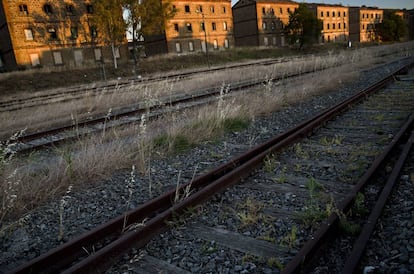
Besides serving as a holiday destination – some people have even built themselves swimming pools – the main activity here these days is photography: people come here on weekends for the evocative landscape, and some even have their wedding photos taken against this backdrop. Adif has also rented out several properties, particularly the station, for film shoots. Pedro Almodóvar’s Julieta was partly shot here, for instance. And finally, there are the explorers and history buffs who come for the Civil War (1936-1939) bunkers scattered across the area.
During those bloody years, a bomb shattered the school of a railroad town in Cáceres province that is known as Monfragüe today, but which was originally founded as Plasencia-Empalme and was later renamed Palazuelo-Empalme. Seven children and two adults died in the blast, and a nearby house still shows the marks of the shrapnel that was embedded on its walls. There are no more than 10 residents here in the winter, but the local fiestas still take place every year, attracting as many as 125 people. Many are former residents who come to catch up with old friends. “We hold a dance, a raffle and a Mass. Later we eat at the campsite,” explains Víctor Macías, 70, who used to work as a train engineer. “We do it above all so we can see each other again.”
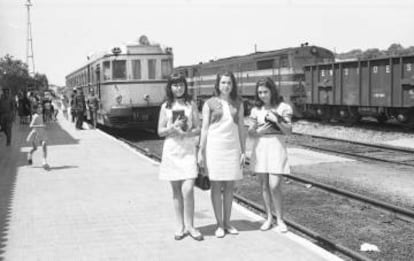
The life of a railroad worker was tough, everyone agrees. The kids played near the tracks while their fathers performed their duties as engineers, conductors and firemen. And even though everyone was accustomed to the coming and going of the railroad cars, from time to time tragedy would hit. Soledad, the daughter of the local doctor in Monfragüe, still shivers when she recalls how she once saw a man decapitated by a passing train.
But at a time of economic hardship across Spain, these workers were assured of a fixed salary every month. And that was no small thing. Many railroad town residents still use the saying: “Hunger passes by the door of the railway man, but it does not enter.”
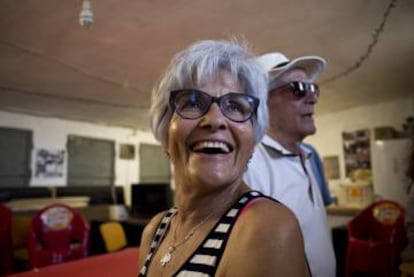
Railroad workers were also unionized and well organized, and they occasionally stood up to the Franco regime. On July 19, 1936, right after the uprising that led to the Civil War and subsequent dictatorship, many railroad workers organized a spontaneous strike at the station of Arroyo-Malpartida (Cáceres). More than one did not live to tell the tale. Later, Mussolini’s troops showed up to keep tabs on railroad traffic to Portugal, and a soldier stayed behind, eventually opening a bar that he named Italia.
“During the Civil War these places played a strategic role. They were military targets, and later they became a form of punishment,” says Francisco Polo, director of Madrid’s Railroad Museum and author of a book on the subject. Around 83,000 railroad workers were targeted during the postwar years. “More than 7,000 were fired, and 13,000 or 14,000 were sanctioned. A very common sanction was sending them to these towns.”
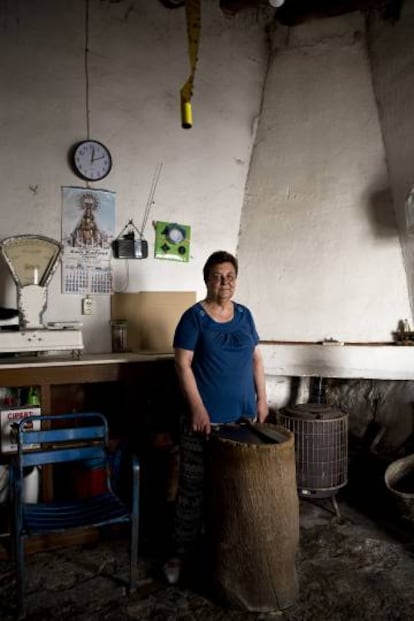
These days, the remaining residents have been creating associations to preserve their legacy and find new uses for the surviving infrastructure. Many say that the empty buildings could be used as senior residences, cultural centers and hotels. Others yearn for a local railroad museum like the ones that already exist in Almorchón or Las Matas in Madrid. And most complain about feeling abandoned by Adif.
The company says it is doing all it can, and that the future of these properties does not depend solely on Adif, but also on various government agencies. “Our aim is to sell the old properties, which we are restoring as much as we can,” says Fernando Gómez, of Adif. “But besides a physical restoration, they need a legal overhaul as well.” Since 2000, the Culture Ministry has been working on a National Plan for Industrial Heritage to bring some legal protection to these sites. In 2004 the paperwork began to declare Monfragüe a cultural asset, but no practical measures came out of it, and the town is falling to pieces.
Antonio Salomón, 83, is a former engineer from Arroyo-Malpartida who still keeps his old uniform and cap, along with other items that he once used on the job. For many years he would drive the train to Madrid’s Delicias station, and they would often bring in coffee that had been smuggled in from Portugal, he confesses with a grin. Salomón says he was never happier than when he spent time in his village.
English version by Susana Urra.


